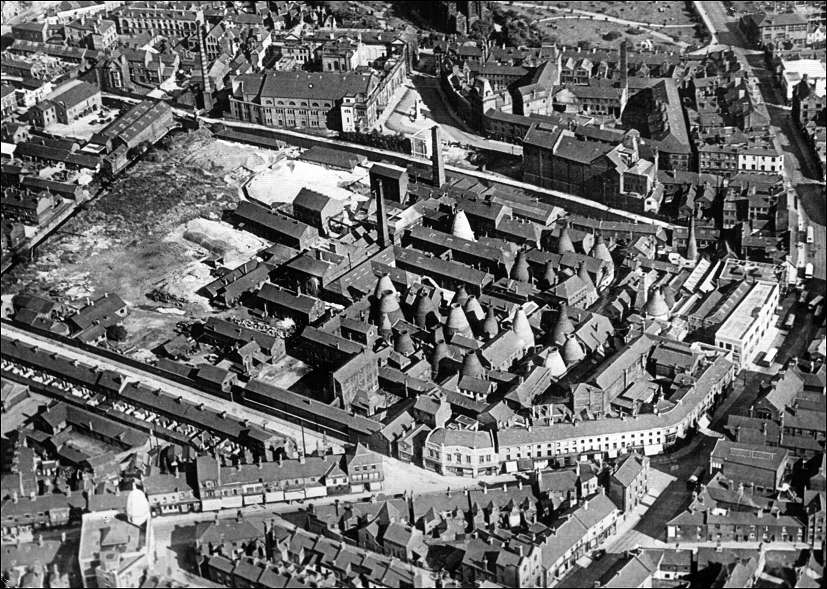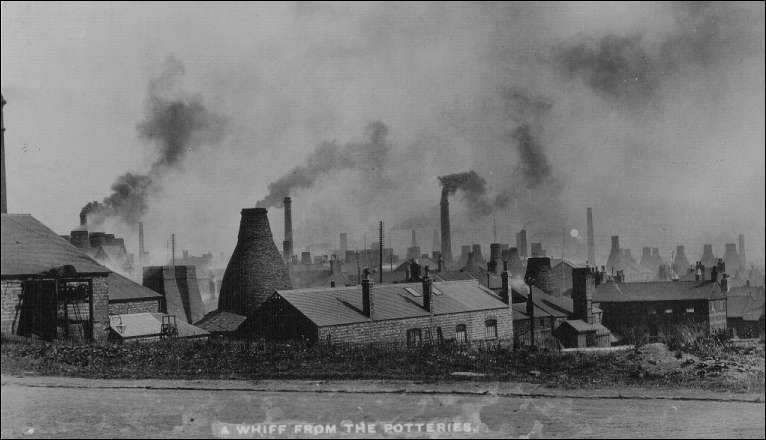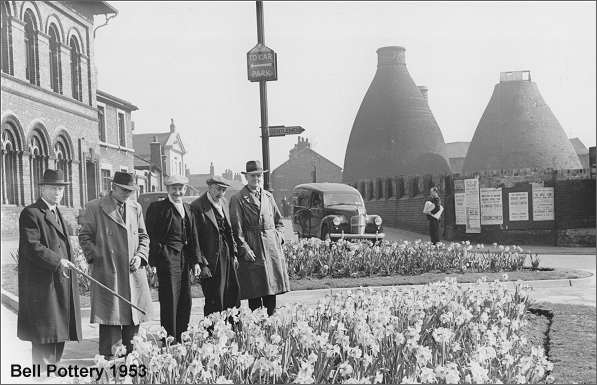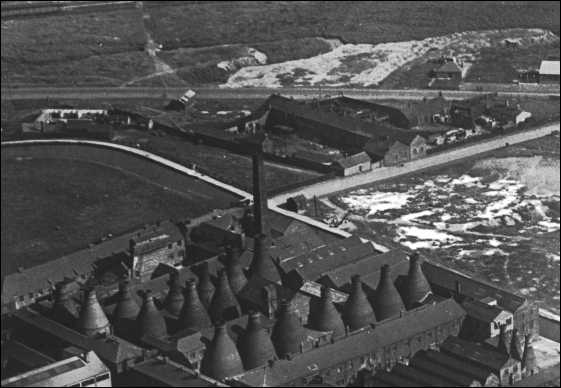 From the 18th century until the 1960s,
bottle ovens were the dominating feature of the Staffordshire
Potteries. There were over two thousand of them standing at any one time and they
could be seen everywhere one looked.
From the 18th century until the 1960s,
bottle ovens were the dominating feature of the Staffordshire
Potteries. There were over two thousand of them standing at any one time and they
could be seen everywhere one looked.
At their peak, in the 1930s and just before the World War II, just over 2100 bottle ovens and kilns existed in the six towns of the Potteries.
In 1951 there were 600-700 and by 1960 there were 157
In 2025, just 47 structures stand complete with their bottle-shaped chimney. 3 more are in a partial state. 50 in total.
The Clean Air Act and
improvements in gas and electric fired kilns sounded the
death-knell for the smoky, coal fired oven.
The kilns still
standing are all listed buildings
For a comprehensive
summary of the bottle kilns of Stoke-on-Trent see: The
Potteries Bottle Oven
Some small factories had only one bottle
oven, other large potbanks had as many as twenty-five.
 Within a factory ovens were not situated according to any set
plan. They might be grouped around a cobbled yard or placed in
a row. Sometimes they were built into the workshops with the upper
part of the chimney protruding through the roof. Within a factory ovens were not situated according to any set
plan. They might be grouped around a cobbled yard or placed in
a row. Sometimes they were built into the workshops with the upper
part of the chimney protruding through the roof.
 No two bottle ovens were exactly alike.
They were all built according to the whim of the builder or of
the potbank owner. No two bottle ovens were exactly alike.
They were all built according to the whim of the builder or of
the potbank owner. |
![]()



